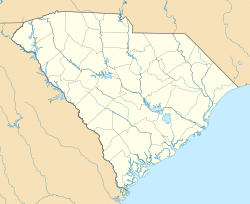Coosawhatchie, South Carolina | |
|---|---|
 Former US 17 as it approaches the intersection with SC 462 in Coosawhatchie | |
| Coordinates: 32°35′06″N80°55′58″W / 32.58500°N 80.93278°W [1] | |
| Country | United States |
| State | South Carolina |
| County | Jasper |
| Area | |
• Total | 0.60 sq mi (1.55 km2) |
| • Land | 0.59 sq mi (1.52 km2) |
| • Water | 0.012 sq mi (0.03 km2) |
| Elevation | 13 ft (4.0 m) |
| Population | |
• Total | 57 |
| • Density | 97.0/sq mi (37.47/km2) |
| Time zone | UTC-5 (Eastern (EST)) |
| • Summer (DST) | UTC-4 (EDT) |
| ZIP Code | 29912 |
| Area code | 843 |
| FIPS code | 45-16675 |
| GNIS feature ID | 2812968 [1] |
Coosawhatchie (koo-saw-HATCH-ee) is an unincorporated community and census-designated place (CDP) located in Jasper County, South Carolina, United States at the northern head of the Broad River. It served as the headquarters for General Robert E. Lee during the early part of the American Civil War. It was first listed as a CDP in the 2020 census with a population of 57. [4] It is accessible from Interstate 95 via Exit 28.


